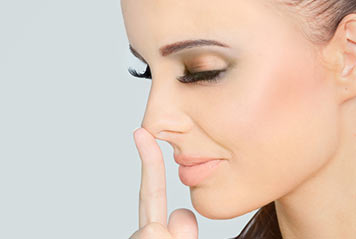Rhinoplasty Tunisia or surgery of the nose is a surgical procedure which consists in restoring the aesthetic harmony of the nose and in correcting some functional problems which can affect the breathing (treatment of the deviation of the nasal septum for example).
Several reasons motivate patients to resort to rhinoplasty.

Indeed, the problems of shape of the nose can be acquired following a traumatism, or it can be congenital, or malformative. Candidates can be men or women, with a minimum age exceeding the end of adolescence.
Several techniques exist for the remodeling of the nose. To each patient corresponds the technique best adapted to his case. In addition, the surgical approach may be external or internal (endonasal) depending on the complexity of the intervention.
Anesthesia is most often general, but it can be done under local anesthetic (in intravenous tranquilizers) in some cases. The duration is 45 minutes to 2 hours.
there are several types of rhinoplasty in tunisia among which, augmentation rhinoplasty and reduction rhinoplasty
It is an aesthetic surgery of the nose that aims to adjust the size of the nose too bulky, rhinoplasty reduction is an intervention of cosmetic surgery of the nose more and more requested.
 Rhinoplasty for reduction
Rhinoplasty for reduction
The rhinoplasty for reduction is often practiced to remedy the problem of what is called "witch profile". It reduces the nasal tip that harms the harmony of a correct face. The intervention of rhinoplasty tunisie is the reduction of nasal bone and cartilage that make the nasal dorsum has a "hump" or a protuberance.
Rhinoplasty for augmentation involves the increase of the nasal dorsum, it is generally recommended for people with a small nose. The origin of this concern can be:
The augmentation of the nose can be performed under local anesthesia with sedation or general anesthesia, depending on the patient's desire and / or the complexity of the operation.
Septoplasty or nasal septum correction surgery is the type of corrective nose surgery that maxillofacial surgeons often perform. This surgical operation is performed to correct the breathing problems caused by a deviated nasal septum. The procedure consists of a selective removal of the cartilage from the nasal septum located at the bottom of the nasal mucosa, this procedure takes place following one or more specific techniques as needed.
A septoplasty may be associated with rhinoplasty (augmentation or reduction) thus speaking of rhinoseptoplasty.
This procedure is performed under general anesthesia or local anesthesia, depending on the complexity of the operation.
The consultation with the plastic surgeon in Tunisia is crucial to assess the patient's motivation and expectations. Also, one examines the nose, the skin, the face and one decides at the end of the feasibility of the act and the technique to be done.
In case of discomfort to respiration, a scanner is indicated to make the diagnosis of the certainty of deviation of the nasal septum.
Then, a preoperative biological assessment is prescribed. Remain to be done after the consultation of anesthesia which precedes the rhinoplasty Tunisia
Wearing a nasal splint is mandatory during the days following the procedure. Indeed, it will prevent movement and movement of nasal bones. In addition, you can feel discomfort with the presence of wicks. They will be removed by the fifth postoperative day.
The edema and bruising around the eyes will gradually dissipate in 3 weeks. Also, analgesics are prescribed for pain.
Rest is required during convalescence. That is why the work stoppage lasts 10 to 15 days, and the sports activities exemption lasts 3 months.
For the result, we will see a result in 3 months. Finally, after a year of rhinoplasty in Tunisia, we can talk about the final result.
Like any surgical procedure, complications are possible whether related to anesthesia or related or gesture. However, it is through the use of the experienced surgeon that you will minimize the risk of rhinoplasty Tunisia.
Possible specific complications are bleeding and hematoma, infections, unsightly scars, skin, mucous, cartilage and respiratory disorders.